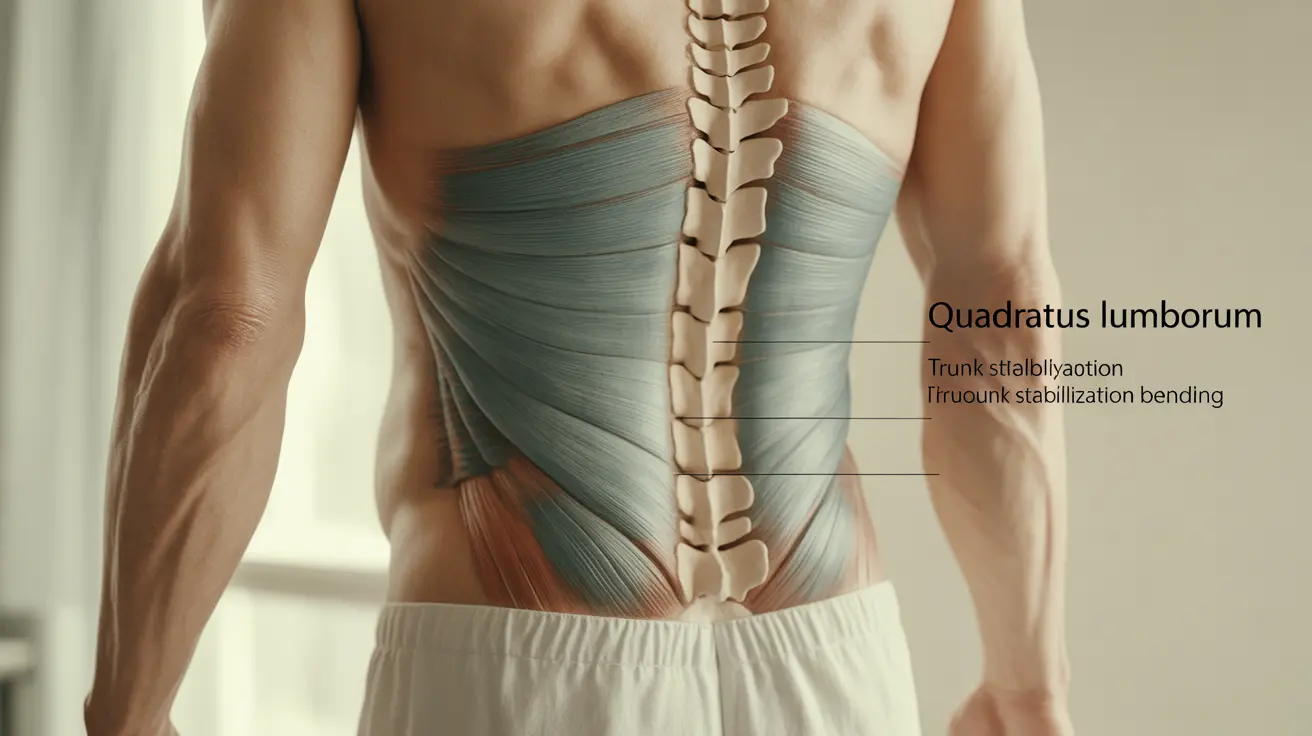The quadratus lumborum, a crucial muscle in your lower back, plays a vital role in everyday movements and stability. When this muscle becomes strained or painful, it can significantly impact your quality of life, affecting everything from walking to maintaining proper posture.
In this comprehensive guide, we'll explore the causes, symptoms, and effective treatment options for quadratus lumborum pain, helping you understand how to manage and prevent this common source of lower back discomfort.
Understanding the Quadratus Lumborum Muscle
The quadratus lumborum is a deep muscle located on either side of your lower spine, extending from your pelvis to your lower ribs. This powerful muscle helps with various movements, including:
- Side-bending of the trunk
- Stabilizing the spine during walking
- Assisting with breathing by fixing the lower ribs
- Supporting proper posture
Common Symptoms and Causes
Quadratus lumborum pain typically manifests as deep, aching discomfort in the lower back, often more pronounced on one side. Common symptoms include:
- Sharp pain when getting up from a seated position
- Difficulty maintaining proper posture
- Pain that worsens with prolonged sitting or standing
- Discomfort when bending sideways or twisting
Primary Causes
Several factors can contribute to quadratus lumborum pain:
- Sudden movements or lifting heavy objects
- Poor posture, especially during prolonged sitting
- Muscle imbalances
- Overuse during repetitive activities
- Sleep positions that strain the lower back
Treatment Approaches
Conservative Management
Initial treatment typically focuses on conservative measures to reduce pain and inflammation:
- Rest from aggravating activities
- Ice therapy for acute pain
- Heat therapy for chronic discomfort
- Gentle stretching exercises
- Over-the-counter pain medications when appropriate
Physical Therapy Interventions
A physical therapist can provide targeted treatments including:
- Manual therapy techniques
- Specific stretching protocols
- Strengthening exercises
- Posture correction
- Movement pattern retraining
Prevention Strategies
Preventing quadratus lumborum pain involves maintaining good habits:
- Practice proper lifting techniques
- Maintain good posture during daily activities
- Take regular breaks from prolonged sitting
- Strengthen core muscles
- Use ergonomic furniture and equipment
Exercise and Stretching Techniques
Specific exercises can help alleviate and prevent quadratus lumborum pain:
Effective Stretches
- Child's pose with side bend
- Standing side bend stretch
- Cat-cow pose
- Seated twist stretch
Strengthening Exercises
- Side planks
- Bird dog exercise
- Pelvic tilts
- Bridge pose variations
Frequently Asked Questions
What are the typical symptoms and causes of quadratus lumborum pain?
Typical symptoms include one-sided lower back pain, difficulty with side-bending, and pain that worsens with prolonged sitting or standing. Common causes include poor posture, sudden movements, heavy lifting, and muscle imbalances.
How is quadratus lumborum pain treated, and what stretching exercises can help alleviate it?
Treatment includes rest, ice/heat therapy, gentle stretching, and physical therapy. Effective stretches include child's pose with side bend, standing side bends, and seated twists. Professional guidance may be necessary for proper form and technique.
Can poor posture or sitting for long periods cause quadratus lumborum pain?
Yes, poor posture and prolonged sitting are significant contributors to quadratus lumborum pain. These habits can create muscle imbalances and strain that lead to discomfort and dysfunction in the lower back.
What are some effective ways to prevent quadratus lumborum muscle strain during daily activities?
Prevention strategies include maintaining proper posture, using correct lifting techniques, taking regular breaks from sitting, strengthening core muscles, and using ergonomic furniture and equipment.
How does physical therapy help manage quadratus lumborum pain and improve lower back strength?
Physical therapy provides targeted interventions including manual therapy, specific exercises, posture correction, and movement retraining. These techniques help reduce pain, improve strength and flexibility, and prevent future issues.




